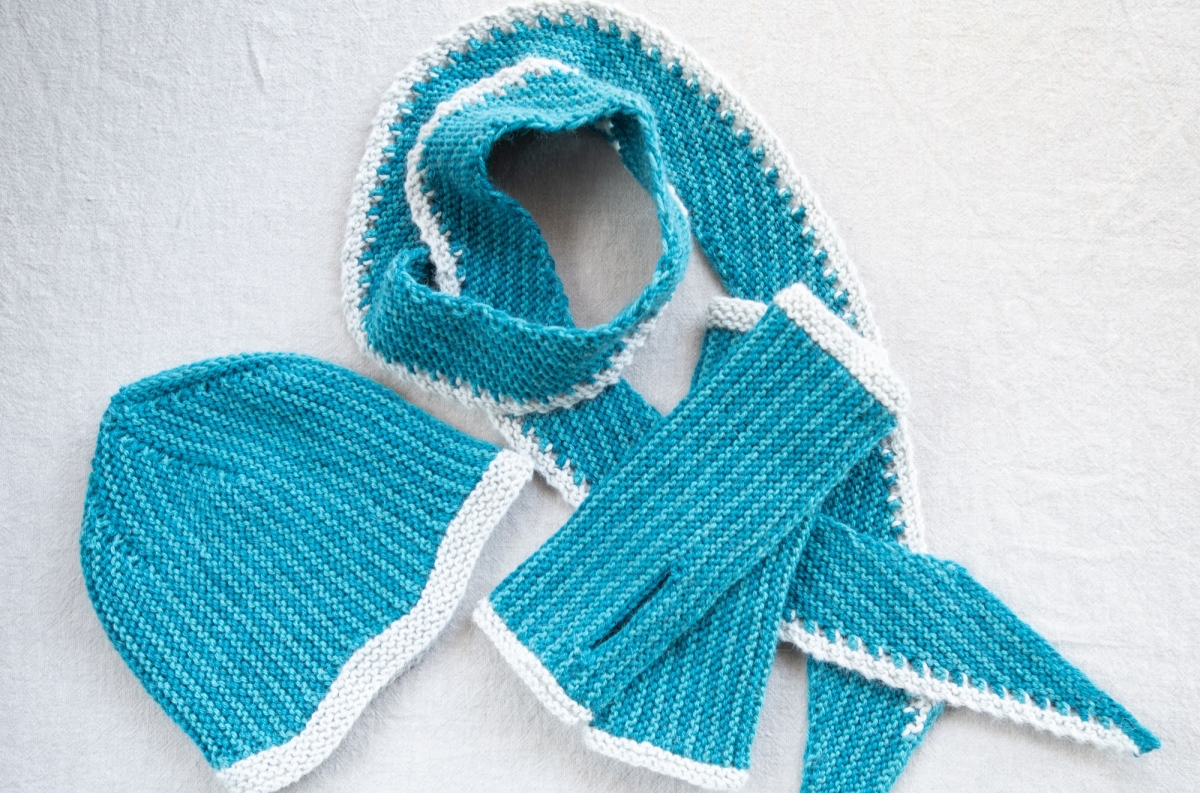Do you love Garter stitch? One of the simplest stitch patterns to create, Garter stitch offers such great flexibility. It can be used on its own in beginners and learn-to-knit patterns or combined with other textures to add variety and shape to more advanced designs. Garter stitch is also an excellent choice for shaping, offering one of the easiest short row shaping techniques with German short rows. It’s a versatile stitch with a lot to offer, so it deserves careful consideration when it comes to finishing your Garter stitch items.
What is blocking?
Whether or not to block garter stitch is a topic of some disagreement! If you’re new to blocking, this is the process of gently washing your finished knitting project and laying it out to dry. There are definite benefits to blocking, most notably that it evens out and smooths the stitchwork. Blocking is often used to establish or solidify shaping in a finished piece, but it can also settle stitchwork, particularly for thick and thin yarn.
With these benefits, why might you consider not blocking Garter stitch? The answer is that blocking also has the potential to stretch out a finished piece of knitting, particularly if the wet garment is quite heavy. Wet knitting can deform under its own weight, and is susceptible to stretching. Once this happens, it’s nearly impossible to undo. If you decide to block your work, gentle handling is absolutely essential, especially for heavier items.
When to block garter stitch
Having looked at the pros and cons, is Garter stitch a good candidate for blocking? Yes, if you are very careful, but I would only recommend it in certain situations. I block about 50 % of my Garter stitch projects. I avoid blocking Garter stitch if:
- I really want bounce and squish in the fabric
- The shaping of the project looks great without blocking
This is generally true for projects that use exclusively Garter stitch, rather than combining it with other stitch types. I tend to block Garter stitch projects if Garter stitch is combined with other stitches and I want the garment to sit smoothly across the stitch transitions. This can be relevant especially if linearity within the garment is important to the overall look; without blocking, different stitch types will stretch and sit differently and will distort clean lines within a project.
Final thoughts
Once you’ve completed a Garter stitch project, give the result some careful thought. If you think you’d like it to sit more smoothly than it does without blocking, give it a try. If you’re feeling nervous about blocking Garter stitch, work up a sample swatch or two and practice blocking with those. This is a great way to build confidence before you start experimenting with your knitting projects.
Check out our Knit Collections or try our unique Knitting Patterns and Knit Kits on your own!

